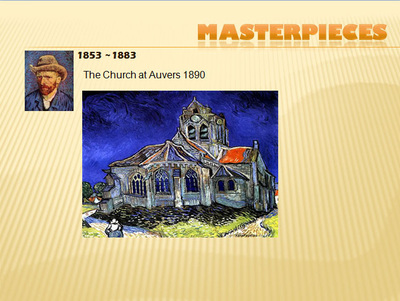When you search the historical past of Marital Arts, you shall discover the duty to be difficult and difficult. The conviction on which this book is constructed is that in the long run all of the questions we customarily ask ourselves relating to the selection of theories and theorists, methods and methodologies, proof, interpretation, and the structure of the self-discipline are swept aside by what we really produce. In their separate ways each blocked the discernment of linkages between previous and current, a vision that was essential for a historical past of recent architecture. Xlviii Frances Spalding, Roger Fry: Art and Life, Berkeley: University of California Press, 1980.
Saxl settled in London, bringing Warburg’s library with him and establishing the Warburg Institute Panofsky settled in Princeton at the Institute for Advanced Study In this respect they were a part of a rare inflow of German artwork historians into the English-talking academy within the 1930s. A sense of the worth of historical past was further hampered by the widespread impression that advanced fashionable structure should be severely useful. Cxxvi The criterion of political correctness will figure in a later chapter of this guide.
Cxxvii Although Wagner (1841-1918) condemned dependence on the Gothic and Renaissance kinds and called for the usage of modern supplies and structural methods, his commendation of flowered borders and other ornamental thrives reveals him to be a person of the artwork nouveau, contrasting with his younger Viennese up to date Adolf Loos (1870-1933), who was really a pioneer of architectural functionalism.
As will change into clear within the following pages, the argument for delay did hamper earlier attempts, often conserving the study of recent artwork out of the college. Berger seems to have turn out to be a patron saint of social artwork historical past and visual tradition to a degree that social art historians resembling Frederick Antal or Arnold Hauser by no means did. In a different way he seems to have discovered minimalism too cerebral; it violated the pleasure principle that was all the time central to his appreciation of art. Futurism seemed to be exacting revenge on the celebrators of older artwork who hated modern work: it turned the tables.
I know that just about nothing in this e book could be justified as scholarship, and even as criticism, however it is what I want to write as a result of it’s what I even have seen for myself. In a way, that state of affairs is unobjectionable—in spite of everything, it serves the sensible purpose of finding the best words to describe the art. There’s no substitute for looking at the actual objects and we take full advantage of Cambridge’s excellent sources, including the Fitzwilliam Museum and its image conservation division, Kettle’s Yard and the Colleges’ artwork collections. The legacy of psychoanalysis in artwork history has been profound, and extends past Freud and Jung.
